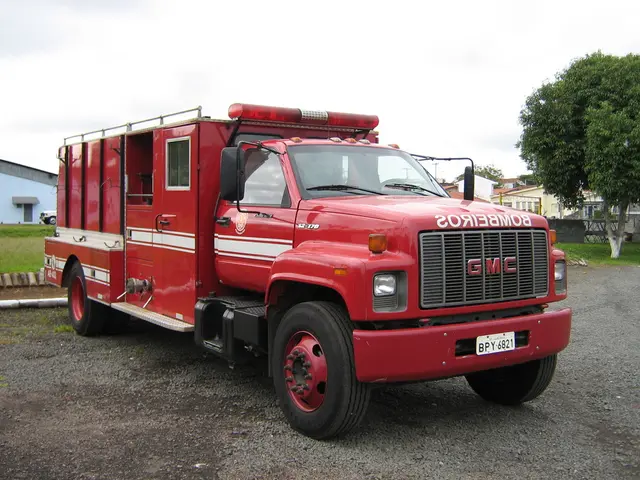Exploring Flight Axis Movements: Roll, Pitch, and Yaw - The Fundamental Maneuvers in the Air
Hey there! Let's dive into the thrilling world of airplane maneuvers and take a closer look at roll, pitch, and yaw – the three vital axes that keep aircraft in the sky and perform those impressive feats. Imagine an airplane as a 3D object, these key axes dictate its rotational movements around the center of gravity.
Roll: Banking into Turns
Take a cue from the eye-catching aerial acrobats – eagles in barrel rolls – that's roll in action! Roll is essentially the airplane rotating along its longitudinal axis, tilting the wings from a level flight stance to a banked position. The banking allows the aircraft to turn while generating lift. The controlling heroes for this maneuver are the ailerons, hinged flaps positioned on the trailing edge of each wing. By moving the ailerons opposite each other, one aileron lifts while the other lowers, creating uneven lift between the wings and causing the plane to roll, initiating a turn.
Pitch: Climbing High and Diving Low
Think of a seesaw tilted on one end, and you've got pitch! This movement signifies the aircraft moving up or down along its lateral axis. To adjust the pitch, the powerful ally comes in the form of the elevators, hinged flaps located on the horizontal stabilizer (the tailplane). By raising or lowering the elevators, the pilot alters the angle of attack of the wings, which in turn, affects the amount of lift produced. Enhancing the angle of attack boosts lift and propels the airplane to climb. On the flip side, lowering the elevators reduces lift and initiates a descent.
Yaw: Steering Like a Rudder
Imagine shaking your head side to side, and now visualize that in an airplane – that's yawing! Yaw is the rotation of the aircraft around the vertical axis, swinging the nose left or right. This movement acts like steering a boat, controlled by the rudder, located on the vertical stabilizer (the fin). By deflecting the rudder left or right, the pilot disrupts airflow over the vertical stabilizer, causing the aircraft to yaw in the opposite direction. Although yaw doesn’t directly affect altitude, it plays a pivotal role in coordinated turns when combined with ailerons to prevent skidding or slipping.
Flying with Finesse: The Dance of Coordination
An airplane moves through an intricate dance of these rotations, rather than acting alone. For instance, a coordinated turn involves a combination of roll and pitch. The pilot banks the aircraft using ailerons and adjusts the elevators to keep altitude steady throughout the turn. Yaw, alongside coordinated aileron input, helps fine-tune the direction during a turn, ensuring smooth sailing without sideslipping or wobbling.
Commanding the Skies: Mastering the Core Elements
Comprehending and harmonizing roll, pitch, and yaw is the basis of stellar flight control. These axes serve as the building blocks that empower pilots to navigate the skies with grace and precision. Whether you're aspiring to be a pilot or simply a jet enthusiast, understanding these concepts enriches your appreciation for the extraordinary science and skill involved in flying.
Need more? Check out these valuable resources to delve deeper into roll, pitch, and yaw:
- Federal Aviation Administration (FAA): The FAA offers a treasure trove of information on aircraft controls and maneuvers, including their official "Airplane Flying Handbook" https://www.faa.gov/regulations_policies/handbooks_manuals/aviation/airplane_handbook
- Aircraft Spruce & Specialty Co.: Their website includes a helpful section on "Understanding Aircraft Control Surfaces" that clearly explains the function of ailerons, elevators, and rudders https://m.youtube.com/watch?v=RW1UQXSCZKc
- Khan Academy (Video): Khan Academy brings a clear and concise video explanation of roll, pitch, and yaw, complete with animations to visualize the movements https://www.khanacademy.org/science/physics/one-dimensional-motion/kinematic-formulas/v/acceleration-of-aircraft-carrier-takeoff
- The ailerons, positioned on the trailing edge of each wing, are essential in performing roll by creating uneven lift between the wings, mimicking the impressive barrel rolls performed by eagles and allowing the airplane to turn.
- Grasping the concept of pitch is crucial, as it signifies the aircraft's movement up or down along its lateral axis. This understanding empowers pilots to navigate the skies with precision by adjusting the angle of attack with the help of the elevators, located on the horizontal stabilizer.




